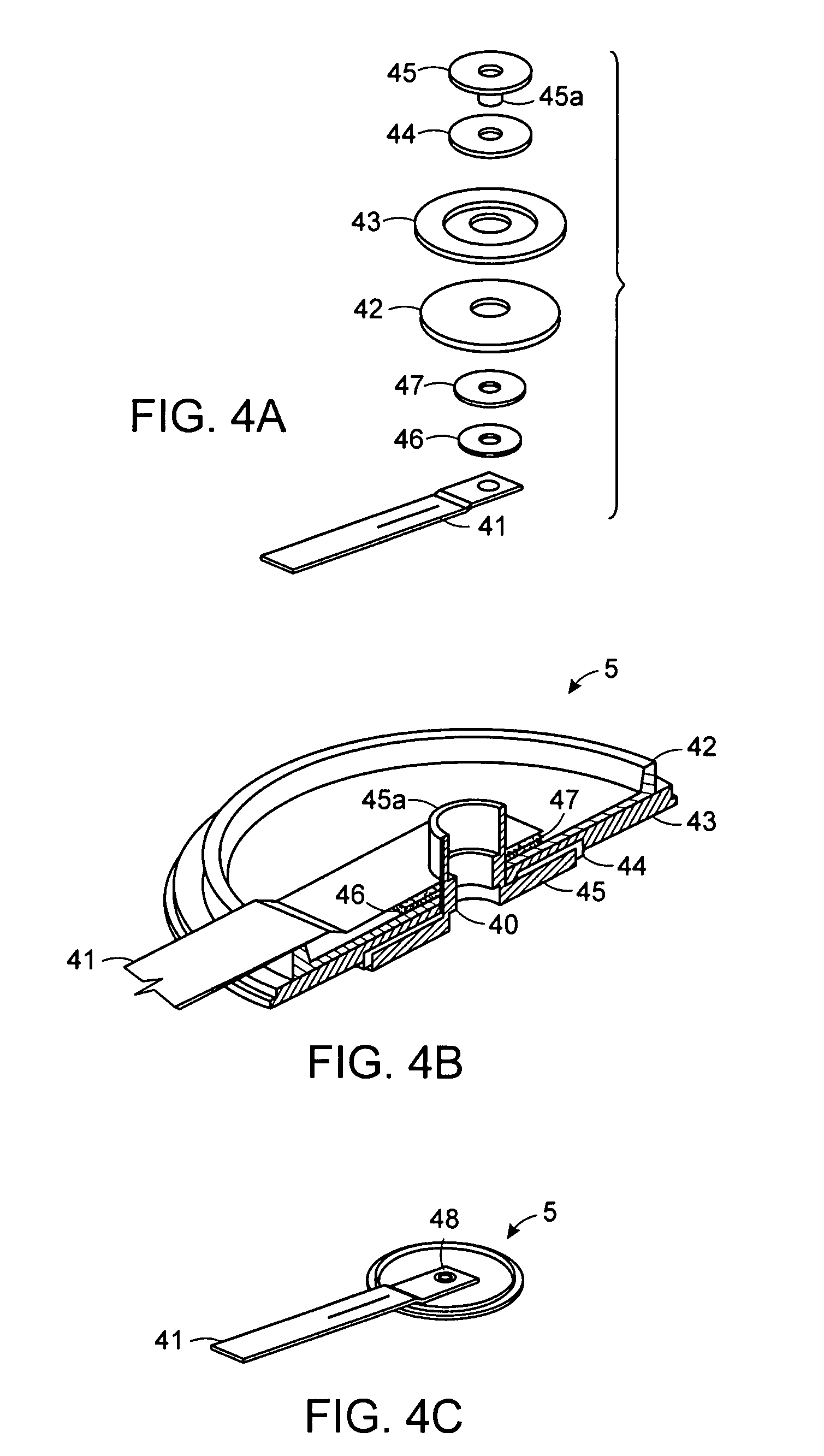Battery cell design and method of its construction
a battery cell and cell end technology, applied in the field of electrochemical battery cells, can solve the problems of reducing the total energy capacity of a cell, crimping techniques are not efficient use of cell volume, and the attempt to create a robust hermetic seal between the cell's can and the cell's end cap after the cell has been activated, and achieves the effect of low inductance and easy manufacturing of electrochemical cells
- Summary
- Abstract
- Description
- Claims
- Application Information
AI Technical Summary
Benefits of technology
Problems solved by technology
Method used
Image
Examples
Embodiment Construction
[0058] Conventional battery cell end cap design incorporates one or more of a fill-hole, a safety vent, and a power terminal into the design of an end cap. These features are usually separate, individual, and bulky entities occupying their own internal volume on the cell's end cap. Battery cells that utilize a symmetrically centralized activation fill-hole have a distinct advantage during manufacture over cells whose activation fill holes are off center and require orientation during fill. Battery cells that utilize a symmetrically centralized battery terminal have a distinct advantage in commercial applications over cells whose power terminal is off center and require specific orientation during use and / or packaging into larger format strings of cells.
[0059] In one or more embodiments of the present invention, a cylindrical cell is provided that includes upper and lower welded end caps. The cell's primary packaging (can and end caps) is composed of aluminum alloy. The weld seal is...
PUM
| Property | Measurement | Unit |
|---|---|---|
| Fraction | aaaaa | aaaaa |
| Angle | aaaaa | aaaaa |
| Area | aaaaa | aaaaa |
Abstract
Description
Claims
Application Information
 Login to View More
Login to View More - R&D
- Intellectual Property
- Life Sciences
- Materials
- Tech Scout
- Unparalleled Data Quality
- Higher Quality Content
- 60% Fewer Hallucinations
Browse by: Latest US Patents, China's latest patents, Technical Efficacy Thesaurus, Application Domain, Technology Topic, Popular Technical Reports.
© 2025 PatSnap. All rights reserved.Legal|Privacy policy|Modern Slavery Act Transparency Statement|Sitemap|About US| Contact US: help@patsnap.com



